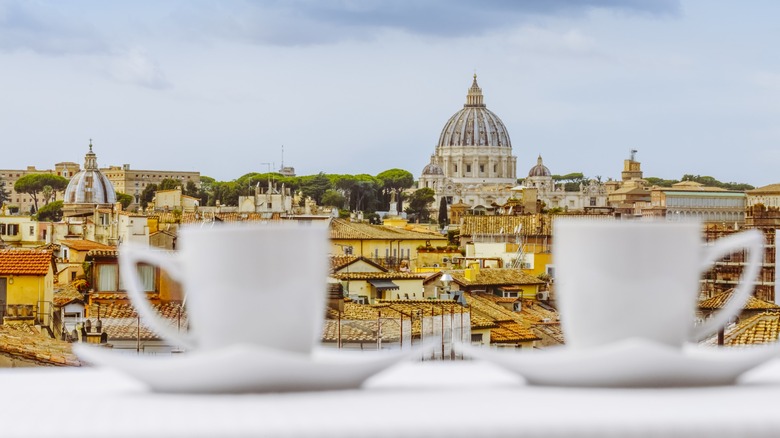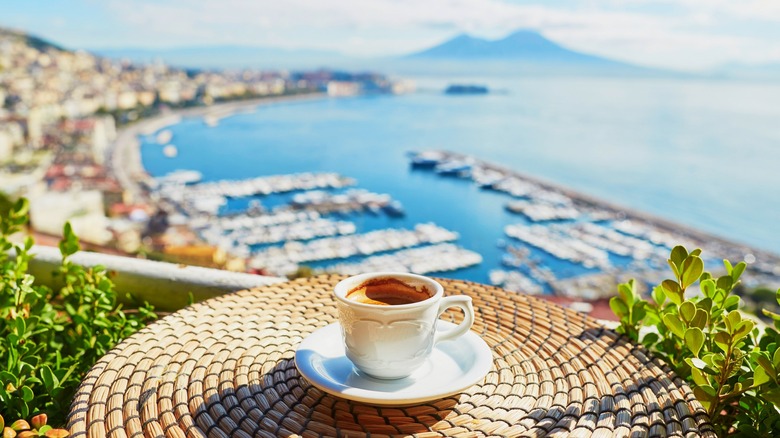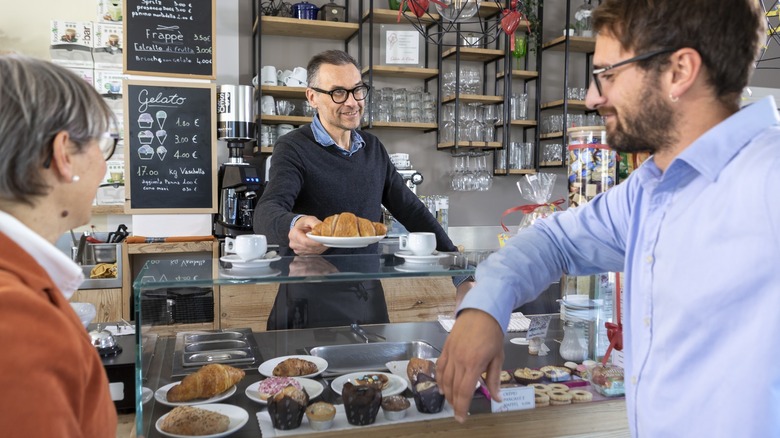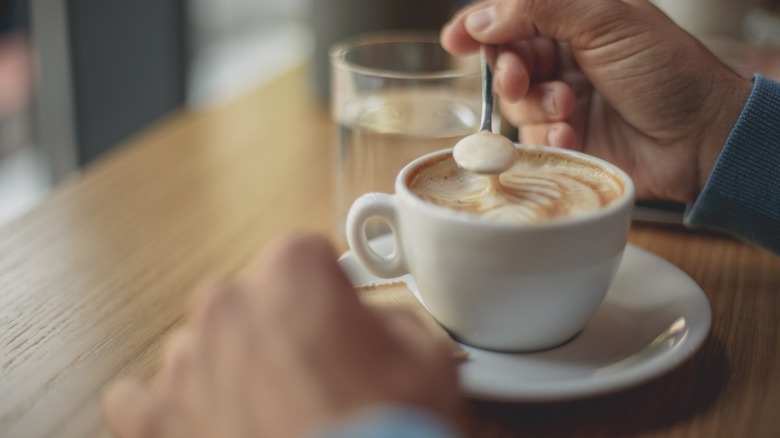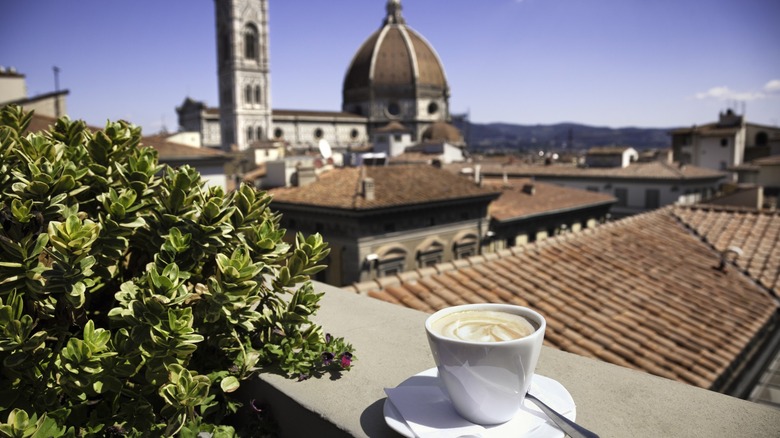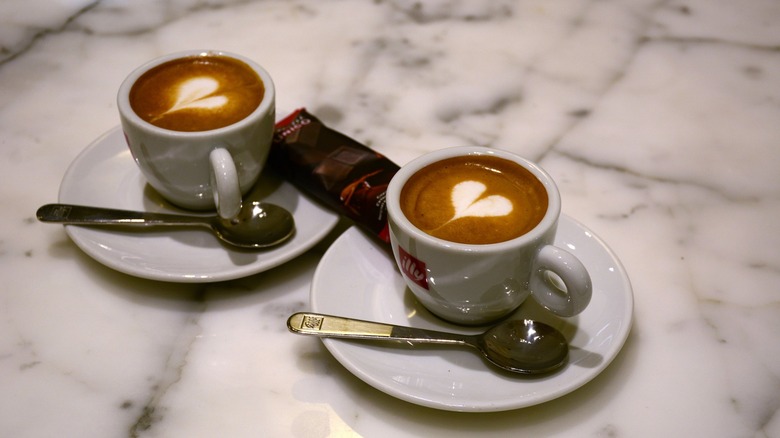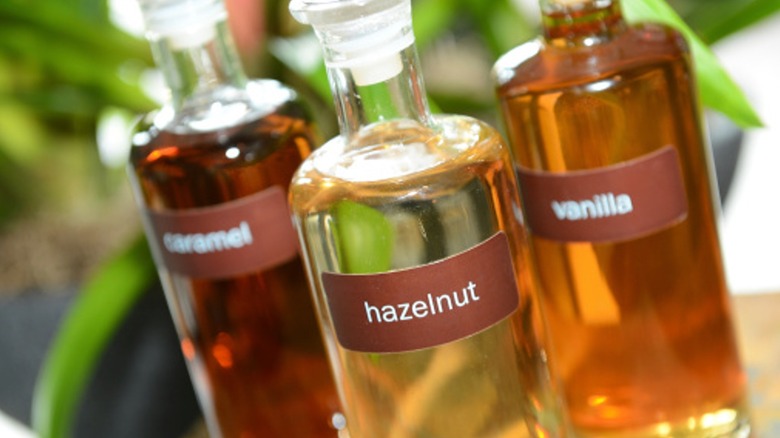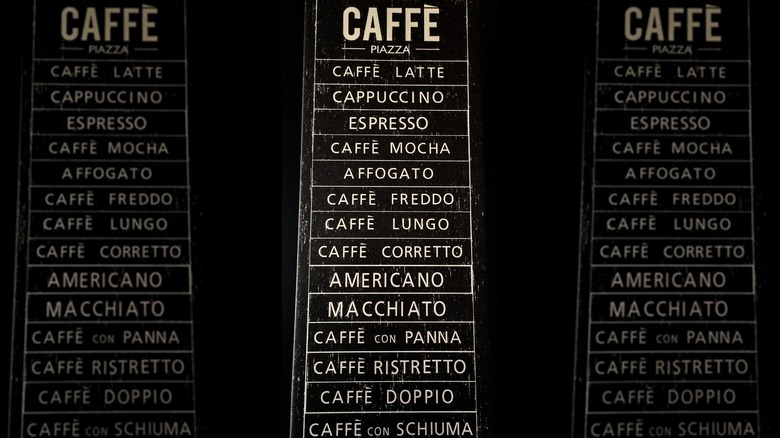10 Things You Might Not Know About Italian Coffee Culture
Even if you've never explored the winding streets of Rome, strolled along Venice's canals, or dined on the best pizza in Naples, there's a lot you can learn about Italian coffee culture without ever visiting Italy. Italians take coffee very seriously, often having up to three — or more — cups of coffee every day.
From cappuccino to espresso, and caffè macchiato to caffè corretto, there's a lot you probably don't know about coffee culture in one of the most beautiful countries in Europe. For example, did you know that in Italy, cappuccino is a morning drink?
Learning more about Italy's culture surrounding coffee helps ensure you won't make any mistakes when it comes to the correct coffee etiquette, but it also helps develop a deeper appreciation of this popular drink. Whether you're planning a trip to this beautiful country or just want to know more about the etiquette and customs that surround everybody's favorite morning pick-me-up, here are ten things you never knew about Italian coffee culture.
1. In Naples, they serve suspended coffee
If you hear somebody in Italy mention a "caffè sospeso," you probably have no idea what they're talking about. Caffè sospeso, or suspended coffee, is common around the Naples area in the south of Italy, and showcases the generous, caring spirit of the Neapolitan people.
But what exactly is a suspended coffee? When you pay for your coffee, many cafes will allow you to pay for an extra coffee, if you like. Italian cafes offering the service usually have a pot on the counter into which you can drop the receipt for the suspended coffee. Should somebody come in who can't afford to buy a coffee that day, they can ask if there are any caffè sospeso available, and be served a free coffee!
Caffè sospeso has been a Neapolitan tradition since the late 1800s, originating in the center of Naples and becoming increasingly popular through the economic hardships of the Second World War. Though the exact origins behind suspended coffee are unclear, some stories say it was a tradition started by nobles, who shared their joy after winning at an event such as jousting by ordering two coffees and leaving one for a stranger to enjoy.
You don't just have to stop at one caffè sospeso either. If you like, you can purchase a few cups for others to enjoy.
2. Cappuccino is a morning drink
In the U.S. and in many other countries around the world, it's not uncommon to order a frothy cappuccino as an afternoon pick-me-up or sit down to enjoy one with friends over a slice of cake. This is a big no-no when in Rome, though — well, in the whole of Italy, actually.
In Italy, cappuccino is strictly a morning drink. Italians only ever drink cappuccino before 11 a.m. and it's generally consumed at breakfast time, early in the morning. There doesn't appear to be a hard and fast reason behind this tradition, but some say it's because the foam and milk make a cappuccino so filling that it acts as a meal replacement.
Of course, if you really, really want a cappuccino at 2 p.m. when you're in Italy, by all means, you should order one. Just be prepared for the shocked and unimpressed look you'll likely get from the barista.
3. It's common to drink coffee standing at the counter
Most of us are used to grabbing a coffee to go or lingering over coffee — and maybe a bite to eat — at a table in our favorite coffee shop. In Italy, things are a little different.
When in Italy, you can enjoy your coffee al banco (at the counter) or al tavole (at the table). You'll notice that at busy times of day, especially around breakfast time, most Italians have their coffee standing up at the bar or counter as it's simply quicker and more convenient.
There's more to having your coffee al banco than just convenience, though. In many cafes, it's much cheaper to drink your coffee at the counter than at a table — often as much as a third or even half of the price. So it makes sense that if you're just popping in for a quick shot of espresso, you don't want to pay extra.
4. You can dip into the communal cremina
Most Italian coffee is served without sugar in it, with the exception of sugary iced drinks in the summer months. Because Italians tend to prefer their coffee strong and black, adding sugar is a personal preference. In most coffee shops, you'll usually find jars or packets of brown and white sugar on the counter, so you can add your own to taste.
In some cafes, particularly more traditional establishments, you'll see communal tubs of cremina, or coffee cream — foam whipped with sugar — sitting on the counter. Italians spoon some directly into their coffee for a sugary kick. Feel free to do the same, if you don't mind dipping into the communal pot.
If you don't spot any cremina or sugar, just ask a barista. The same goes if you're looking for artificial sweeteners or sugar alternatives, which may not always be displayed on the counter.
5. There's only one cup size for coffee
We've all been there: You step into a Starbucks, and you're bamboozled by the array of different drink sizes on offer, from Tall to Grande, and Venti to Trenta. Don't be fooled by the Italian names coffee chains give their drink sizes, though. When in Italy, there's only one cup size for each type of coffee.
Whether you're ordering a cappuccino, a macchiato, or an espresso, just ask for whatever coffee you want, and it will arrive in whatever size cup it comes in. For example, an espresso is a strong shot of coffee that is served in a tiny cup that's slightly flared, while cappuccino comes in a rounded cup that somewhat resembles a small bowl, to allow the foam to be arranged on top of the coffee.
True, there are now international chains in Italy, like Starbucks. If you're visiting one of those, check out the drink sizes on offer and order appropriately. Otherwise, just order your coffee and enjoy it, whatever size cup it's served in.
6. Every coffee has its own Italian name
When visiting Italy, there's a lot to take in, from the historic buildings to the delicious pizza and pasta — and the language. One thing that might trip you up on your Italian vacation or business trip is ordering coffee. You're probably thinking that sounds pretty straightforward, but many people don't actually know the correct name for the coffee they want.
Want an espresso? That's "Un caffè" — though Italians will still know what you mean if you accidentally ask for an espresso. Craving a cappuccino? That's "Un cappuccio" — and it's pronounced, "cappucho."
For an espresso with a little milk froth, it's a caffè macchiato. If you order an Americano, you'll get an espresso served in a deep cup, with a small jug of hot water alongside so you can dilute it to taste.
Don't lose sleep over getting the name for various coffees right. In most parts of Italy, especially major cities, locals will still understand you if you get your order wrong. If they don't, just enjoy whatever coffee comes, and make a note to learn the name of what you actually want for next time!
7. Italians don't have syrups with coffee
If your drink of choice is a caramel latte or an iced vanilla latte, you might be in for disappointment on your trip to Italy. Adding flavored syrups to coffee just isn't the done thing, and you won't find them in most Italian cafes.
Italians don't add syrup to coffee as it masks the flavor of the coffee itself. On that note, you'll enjoy excellent quality coffee across Italy, no matter where you order it, so why add flavored syrup to it and dull the taste?
If you absolutely must have syrup in your coffee, you'll find restaurants or cafes serving desserts usually keep a stock of syrups behind the bar. Feel free to ask for some in your coffee, but don't blame us if you get some funny looks from the barista preparing your beverage. We'd recommend trying Italian coffee without any additions — you can always add sugar to taste if you can't drink coffee without it.
8. A caffè corretto is a cheeky start to your day
Having a sluggish start to your day? Why not try a caffè corretto? This drink is common in northeastern Italy, where it's generally enjoyed in the early morning. It's a bit of a cheeky start to the day, though — and definitely not one for those days you're heading straight to the office or for a client meeting.
A caffè corretto is simply an espresso with a splash of Italian liqueur. Grappa is the usual liqueur used, and believe us when we say it has quite a kick. Not only does a caffè corretto taste simply delicious, it also takes the edge off the day if you're feeling tired or hungover after a late night exploring Italy's nightlife the evening before.
If you have a day free of work or other important commitments, give a caffè corretto a try next time you're in Italy. It'll kickstart your morning like nothing else, guaranteed.
9. Water first, then coffee
If you're sitting at a table in a cozy Italian cafe and the server brings you a glass of water with your coffee, you might be wondering what's going on. In Italy, it's customary to have a few sips of water before drinking your coffee.
Drinking some water before enjoying your coffee acts as a palate cleanser, preparing your palate to appreciate the aroma of your beverage. Coffee has a complex aroma that consists of 800 individual molecules, so you'll want to take time to breathe in that wonderful smell before diving in to your drink.
Coffee can also give you dry mouth and make your breath smell unpleasant. Enjoying a glass of water can help with this, plus has the added bonus of keeping you hydrated, particularly in warmer weather.
In some cafes, you'll need to order water separately, and we'd always recommend doing so to ensure you're enjoying the full coffee experience. Other cafes will serve you a small glass free of charge, so don't be confused if one appears alongside your coffee.
10. Italians drink a lot of coffee
Many of us have a solid morning latte habit where we need a coffee to set us up for a busy day. Or perhaps you're a fan of a coffee pick-me-up on busy afternoons. In the U.S. and many other countries, it's common to have at least one or two cups of coffee a day. Italians take their coffee habit very seriously, though.
In Italy, it's not uncommon to have three — or more — coffees a day. Some Italians have three cups of coffee by lunchtime!
When you consider that black coffee is said to be a digestive aid, this makes more sense. Italians commonly have a coffee after each meal, and with all that delicious pizza and pasta, your digestion could probably do with a little help on your trip to Italy.
Is all that coffee good for you? According to the Harvard T.H. Chan School of Public Health, consuming three to five cups of coffee a day could cut your risk of many chronic diseases. However, for some individuals, consuming this much caffeine can cause anxiety, jitteriness, and difficulty sleeping, so take it easy on the coffee during your trip.
